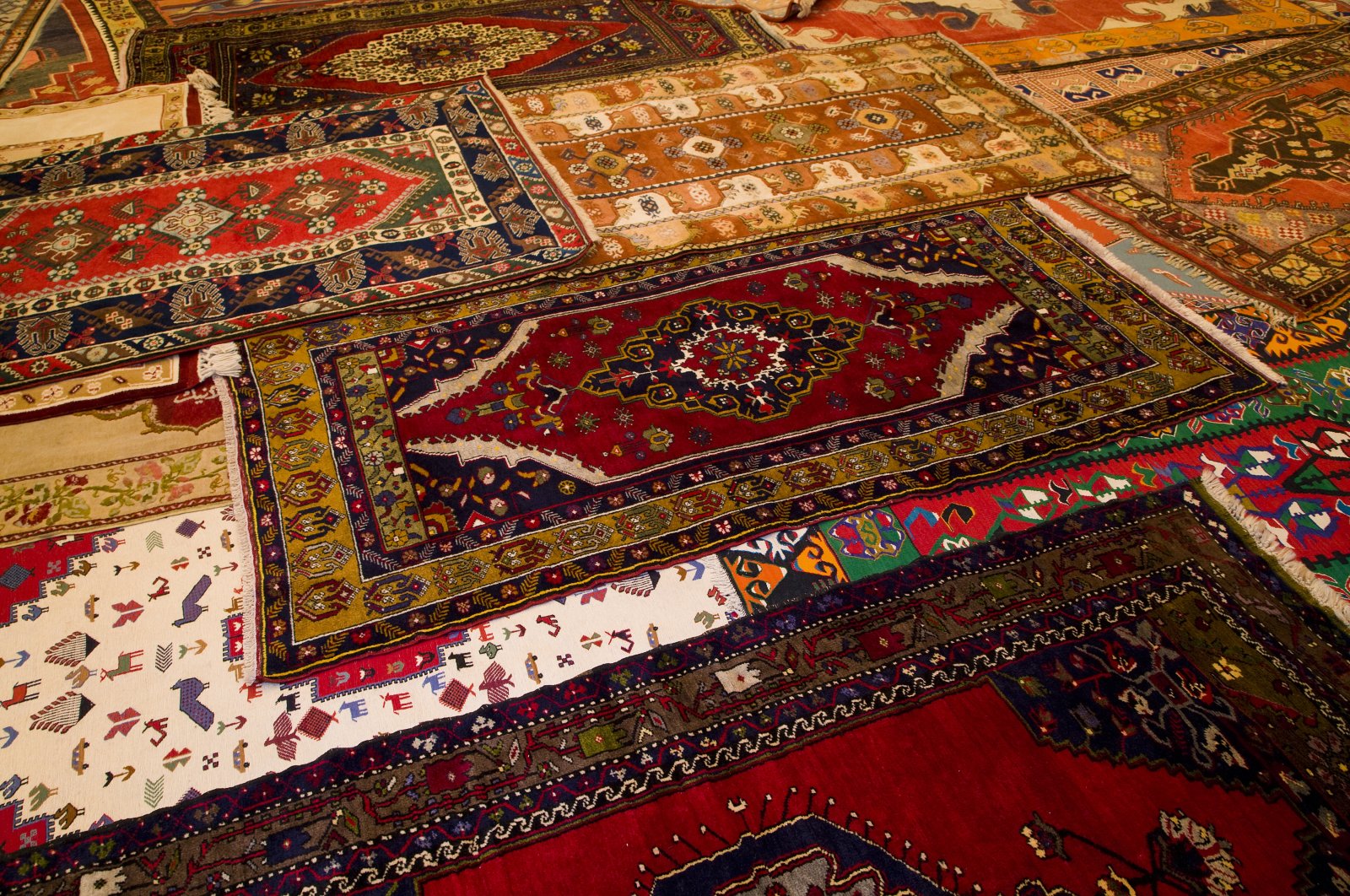Devrim Erbil pushes for museum to honor Turkish carpet art
Türkiye’s legendary artist Devrim Erbil expressed his desire to establish a large carpet museum in either Istanbul or Ankara to promote Turkish carpet weaving.
His statement came during the “From Asia to Anatolia: Turkish Carpets” exhibition organized by the Traditional Turkish Handicrafts Foundation (GESAV) at the ATO Congresium, part of the Ankara Culture Route Festival, held by the Ministry of Culture and Tourism.
The exhibition featured traditional Turkish carpets and eight silk carpets directly woven based on Erbil’s paintings. In an interview with Anadolu Agency (AA), Erbil shared that his interest in carpets is rooted in his Uşak upbringing. He recounted spending the first five years of his life in Uşak, where he was captivated by the sight of carpet weavers.
“I remember the carpet looms in the hallways of homes in Uşak. My aunt gifted me a carpet for my circumcision ceremony, featuring a caravan leader on a donkey in the foreground and two camels in the background. It measures 80 by 60 centimeters, and I still keep it,” Erbil said.
He later noted that traveling through Anatolia revealed the immense “carpet miracle” present in Türkiye. “Every region has its unique colors, compositions, and extraordinary techniques. When I entered Mimar Sinan University and progressed on my artistic path, I began to understand the value of carpets. I have seen contemporary artists in major museums around the world have their works woven into carpets. Why do artists in Türkiye underestimate carpets? Why do they not acknowledge them?” he questioned.
Erbil shared insights into the education of Turkish painters during the republic period, noting that many, including Nurullah Berk, went abroad for training. “When Nurullah Berk met Picasso in France, Picasso asked him, ‘Have you studied calligraphy well?’ Picasso is aware of art worldwide. I consider the work of calligrapher Osman and that of painter Piet Mondrian on the same level, even though Osman lived three centuries before Mondrian, who merely embellished the calligrapher’s works. While many Western art movements were influenced by Ottoman art, there is a clear sense of recognition,” he explained.
He emphasized the unique spread of calligraphy, carpet and kilim arts throughout Türkiye. “I have a passion for carpets, which made me curious about how paintings would appear using carpet techniques. The craftsmanship rooted in this land is invaluable. It doesn’t exist in any other geography. It’s essential to promote carpets,” Erbil stated.
Erbil recounted his visit to a carpet museum in Baku, where children were shown the craft of carpet weaving, and a carpet gallery was available. He urged: “Türkiye needs carpet museums. Vocational schools should have carpet weaving departments. The number of carpet weavers is dwindling. Those who know this technique are leaving, and they are not being replaced. As a passionate advocate for carpets, I have dedicated myself to this cause. After discussions with state officials, I hope to see a grand carpet museum established in Istanbul or Ankara. Here, we will not only promote carpets but also show those who believe traditional Turkish art has vanished since the Ottoman era that they are mistaken.”
Kerim Sefer, president of the Traditional Turkish Handicrafts Foundation (GESAV), stated that the foundation was established in 1989 with nearly 2,000 traditional handicrafts producers and aims to promote all handicrafts through numerous exhibitions.
He highlighted that his family has been involved in carpet weaving and collecting for four generations and noted that Turkish carpets gained recognition in Europe starting from the 13th century, with increased carpet trade from Anatolia in the 16th century. Sefer also pointed out a slowdown in carpet production by the late 19th century, recalling that the greatest advancements in carpet production occurred during the Republic era with the emergence of the Sümer Carpet.
“Today, the carpet industry in Türkiye is in dire straits. Very few looms are still operational. Only those who work on a commission basis remain. The segments that once produced and sold carpets have completely vanished. For production to continue, carpets must be sold the moment they are created,” he remarked.
Sefer explained that while carpets were once purchased for dowries, the younger generation is increasingly uninterested in carpet culture. “Producers and the government must address this situation. We need to preserve this culture. We must showcase and promote the carpets recognized worldwide to the younger generation to foster demand,” he emphasized.
He also noted that, due to Erbil’s passion for art and carpets, they created carpets based directly on his works. “We wove carpets from many of professor Devrim Erbil’s paintings. One carpet, based on a piece measuring 136 by 132 centimeters, was crafted over two and a half years by two women, featuring a million knots per square meter. Hand-woven carpets require significant labor,” Sefer concluded.




